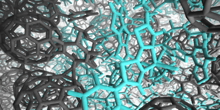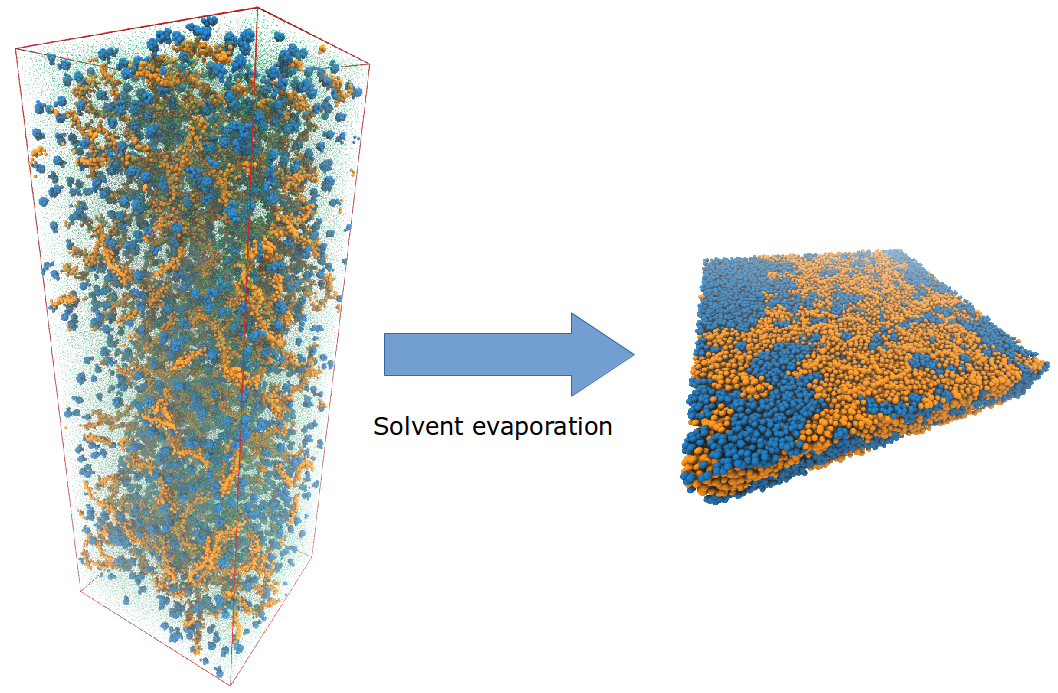Design of Organic Photovoltaic Devices
The energy transition which is demanded for softening the effects of climate change requires the exploitation of several renewable energy resources. Among these, solar energy is foreseen to play a major role. Organic solar cells (OSCs) are amid the new generation photovoltaic technologies which could be used to convert solar energy. Their potential resides in their lightness, flexibility and large-scale roll-to-roll manufacturability.
The most efficient OSCs fabricated to date are based on the bulk heterojunction concept. In such devices, the active layer is composed of intimately intermixed electron acceptors – molecules with a high electron affinity such as fullerene derivatives – and electron donors – such as semiconducting polymers. The complex structure in which they are arranged, i.e., the morphology of the active layer, has been shown to be crucial for the efficiency of the final device in a plentiful number of studies and it is still the subject of active research. Yet, the complex relation between the constituent materials, processing conditions, the resulting morphology and the efficiency of the final device remains elusive. If one wishes to elucidate this complex interplay from a computational point of view, given the hierarchy of time and length scales involved, modelling is required all the way from the QM to the CG level. The joint expertise of the Berendsen Center offers a unique opportunity toward the design of next generation organic photovoltaic (OPV) devices.

In the Molecular Dynamics group, carefully parametrized coarse-grain (CG) models compatible with the Martini CG force field are used to generate OPV morphologies via large-scale solvent evaporation simulations, allowing the study of the morphology as a function of the structure of the molecules. These simulations mimic the spin-coating process used to fabricate OSCs in the lab and are shown to capture the kinetically-trapped nature of spin-coated morphologies. These CG morphologies are then back-mapped to all-atom (AA) resolution. The atomistic detail of the generated structures is therefore available for thorough characterization. In the Theoretical Chemistry group, the electronic structure of molecules at the interfaces and in the bulk is then determined with quantum chemical (QC) calculations, in order to elucidate the exciton mobility and electron/hole transfer. The theoretical predictions from the Berendsen Center are used by the FOM focus group on Next Generation OPV to design more efficient solar cells.
Key references:
S. Gunes, H. Neugebauer, N. S. Sariciftci, Conjugated Polymer-based organic solar cells, Chem. Rev., 107, 1324 (2007)

